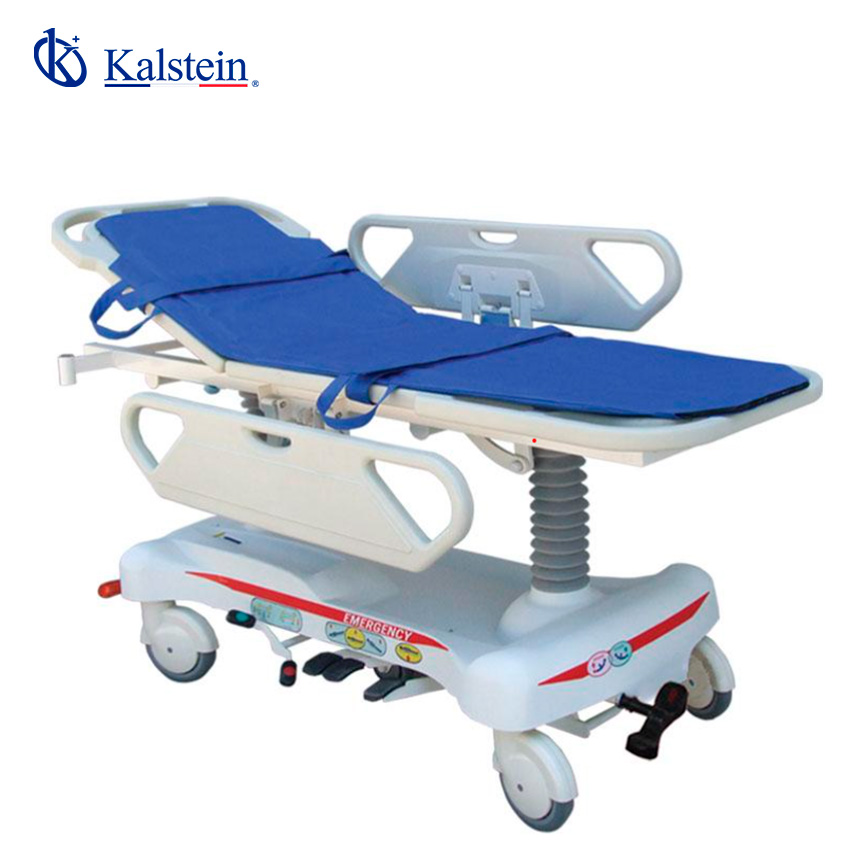The hydraulic transfer stretcher has become an essential element within modern medical equipment. This device, designed to facilitate the transportation and mobilization of patients, offers a series of benefits and unique features that optimize its use in clinical settings.
In this article, we will explore how innovation in medical technology and research has led to this indispensable equipment, solving specific problems for users and healthcare professionals.
We understand that you need equipment that delivers maximum value to your laboratory. We invite you to visit https://kalstein.pk/category-product/medical-line/medical-transfer-stretcher/, to immerse yourself in our universe of cutting-edge technology equipment. Our prices are competitive and accessible, we combine the convenience of online shopping with the guarantee of an exceptional product. Because you deserve the best, we create and offer top-tier laboratory equipment. Make your choice today, where science comes to life. https://kalstein.pk/
Benefits of the Hydraulic Transfer Stretcher
Hydraulic transfer stretchers stand out for their multiple benefits, making them a preferred option in hospitals and clinics. One of the main benefits is ease of use, as its hydraulic mechanism allows for smooth and precise height adjustment. This not only facilitates the transfer of patients to and from different surfaces but also reduces the physical effort required by medical staff, minimizing the risk of occupational injuries.
Another significant benefit is the safety and comfort it provides to patients. Hydraulic stretchers are designed with durable and padded materials that ensure a comfortable experience during transport. Additionally, many of these stretchers feature safety rails and wheel brakes, ensuring that the patient remains stable and secure throughout the transfer process.
Unique Features of the Hydraulic Stretcher
The hydraulic transfer stretcher incorporates innovative features that set it apart from other similar equipment. One of the most notable is the hydraulic height adjustment system, which allows for precise and smooth control with minimal manual effort. This system is particularly useful in emergency situations, where time and efficiency are crucial.
Another unique feature is the versatility in the design of hydraulic stretchers. These can include additional functions such as backrest tilt, leg position adjustments, and special supports for medical equipment. These features allow the stretcher to be customized according to the specific needs of the patient and the medical procedure, thereby improving the quality of care provided.
Medical Innovation in Stretcher Design
Medical innovation has played a fundamental role in the development of hydraulic transfer stretchers. Advances in materials and technology have allowed for the creation of lighter, more durable, and easier-to-handle stretchers. For example, the use of aluminum alloys and other composite materials not only reduces the weight of the stretcher but also improves its strength and durability.
Additionally, the integration of advanced technologies such as sensors and real-time monitoring systems has significantly enhanced the functionality of hydraulic stretchers. These advancements allow healthcare professionals to monitor vital signs and other important metrics during patient transfer, ensuring continuous and high-quality care.
Medical Research and Its Impact on Hydraulic Stretchers
Ongoing medical research is crucial for the development and improvement of hydraulic transfer stretchers. Recent studies have shown that using these stretchers can significantly reduce patient transfer time in emergency situations, which can, in turn, improve clinical outcomes. Furthermore, research has led to the creation of more ergonomic stretchers, which not only benefit patients but also medical staff by reducing the risk of injuries from repetitive movements.
Collaboration between biomedical engineers and healthcare professionals has been essential in identifying areas for improvement and developing innovative solutions. This synergy has resulted in stretchers that not only meet safety and comfort standards but also optimize operational efficiency in hospital settings.
Solving Specific Problems for Users
Hydraulic transfer stretchers are designed to address specific problems faced by both patients and medical staff. One of the main challenges in patient care is safe and efficient mobility. Hydraulic stretchers solve this problem by allowing smooth and controlled transfers, minimizing the risk of falls and injuries for both the patient and the caregiver.
Additionally, these stretchers are especially useful in intensive care units and emergency rooms, where speed and precision are essential. The ability to quickly adjust the height and position of the stretcher facilitates access to patients and allows for more effective medical intervention. This is particularly important in procedures that require immediate and unobstructed access to the patient.
The Future of Hydraulic Transfer Stretchers
The future of hydraulic transfer stretchers promises to be even more innovative with the incorporation of new technologies and materials. Future generations of stretchers are expected to include advanced features such as automated control systems, integration with diagnostic devices, and personalized therapies. These innovations will not only improve the efficiency and safety of patient transfers but also offer a more personalized and patient-centered experience.
In conclusion, hydraulic transfer stretchers represent a perfect combination of medical innovation and dedicated research aimed at improving the quality of patient care. With their unmatched benefits, unique features, and ability to solve specific problems, these stretchers have become an indispensable tool in healthcare. As we continue to advance in medical technology, we can expect hydraulic transfer stretchers to keep evolving, providing even more effective and safe solutions for patient care.

